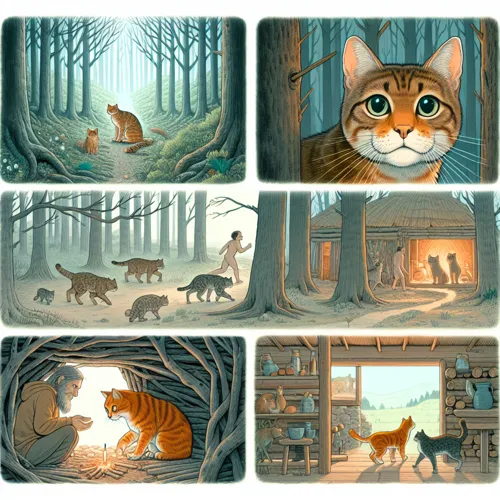It all began around 10,000 years ago in a time when humans were transitioning from hunter-gatherer societies into agricultural and settled communities. It was during these early agricultural societies that cats and people first shared a unique bond. This bond would lead to the wonderful history of cat domestication that spans thousands of years and has been marked by many significant events and developments in their coexistence.
The Origin of the Relationship
In the fertile crescent, located in present-day Iraq, cats were first drawn into human settlements as natural predators of rodents that plagued the grain storage areas. These wild cats slowly began to associate humans with easy food sources, and gradually, a symbiotic relationship emerged. Eventually, early farmers started to keep these cats around intentionally, giving them access to the grains stored in granaries and protecting their crops from other pests and predators. This is the first time cats began to rely on humans for sustenance, marking an essential shift towards domestication.
Selective Breeding: The Transition to Domestic Cats
Over thousands of years, people started to selectively breed wildcats based on specific traits that made them more suited to domestic life. Cats were gradually transformed from their wild counterparts into the fluffy and friendly pets we know today. Some early signs of domestication include changes in appearance like shorter limbs for better balance indoors, rounder faces, and a decrease in body size overall. As the cats adapted to their new environments and became more docile, they started forming closer bonds with humans, leading to the widespread adoption of these animals as cherished companions across many cultures.
Egyptian Cats: A Symbol of Divinity
In ancient Egypt, cats achieved god-like status, becoming an integral part of Egyptian religion and society. The Ancient Egyptians considered felines to be divine creatures, closely associated with the gods Bastet and Sekhmet. This reverence for cats led to their protection under the law; in fact, killing a cat in ancient Egypt was punishable by death! With time, however, domesticated cats spread throughout Asia, Europe, and even reached North America as the New World was colonized by the European powers.
The Influence of Travel and Trade
With the rise of global trade networks, cats continued to travel around the world alongside humans, adapting to various climates and cultures. During these journeys, domestic cats often traveled on ships as rat catchers or stowaways, finding new habitats where they were welcomed by the human communities who needed help controlling pest populations. This allowed the spread of domestic cat species across continents, further enriching their history of domestication.
Present Day: Our Cherished Furry Friends
In present times, cats have become one of the most popular pets worldwide, known for their loving and affectionate personalities. Through centuries of breeding and close relationships with humans, domesticated cats have come a long way from their wild ancestors, showcasing how we can forge enduring bonds across species. From the farmlands of the Fertile Crescent to modern-day homes around the globe, the fascinating history of cat domestication will continue to be shaped by humans and felines alike
